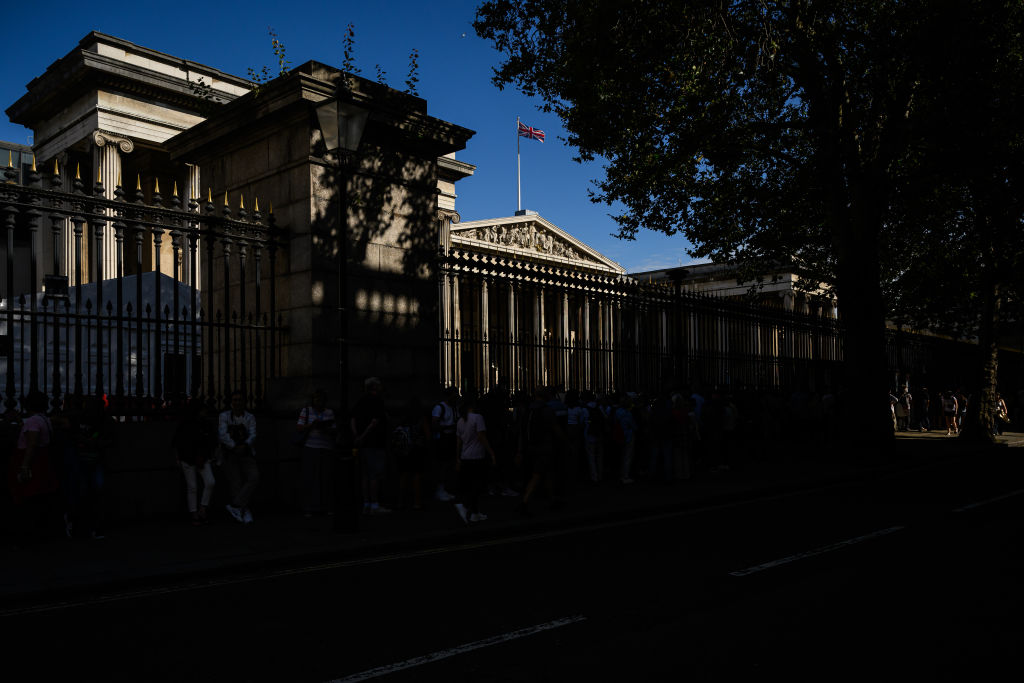Investigation Links More than 77 Indian Antiquities in the Met’s Collection to Prolific Trafficker Subhash Kapoor
At least 77 antiquities from South Asia in the collection of the Metropolitan Museum of Art have been linked to the convicted art trafficker Subhash Kapoor, according to a joint investigation published Wednesday by the Indian Express, the International Consortium of Investigative Journalists, and the UK-based nonprofit Finance Uncovered.
Investigators reviewed the museum’s antiquities catalog and found that the provenance — details of the object’s place of origin and history of ownership — of items in question is listed as acquired from or “donated” by Kapoor or his associates, the late antiquities expert Doris Weiner and her daughter, art dealer Nancy Weiner.
Among the oldest works singled out by the investigation are a terracotta tile carved with figures carrying flowers dating back to the 3rd-4th century BCE; and a stone sculpture of the torso and head of the Hindu deity Vishnu from the 6th century BCE. The allegedly looted works also include 59 paintings and works on paper spanning several centuries, including The Goddess Durga Killing the Buffalo Demon, Mahisha (Mahishasura Mardini), (1760) from the Mewar court; and an illustration of the Hindu deity Krishna subduing the serpent Kaliya, attributed to “a follower of Nainsukh (active 1735-78)”. Of the 59 paintings, the investigation reports that 55 were “donated to the museum with identical provenance listings: “Possibly Shri Parshotam Ram Kapoor, Jalandhar and New Delhi, India; Subhash Kapoor, New York (until 2008; donated).”
The late Parshotam Kapoor, hailing from Jalandhar, is the father of Subhash Kapoor.
Officials in the U.S. and India have accused Subhash Kapoor and his associates of leading a vast smuggling operation from his former Manhattan gallery, Art of the Past. Investigations into his dealings have uncovered a multinational ring that, between 2011 and 2022, trafficked thousands of objects valued at more than $107 million from Afghanistan, Cambodia, India, Pakistan, Nepal, and Thailand using false provenance papers. The total value of the objects has been estimated at more than $140 million.
The immense scope of his trafficking operation has ensured years of difficult detective work are ahead for countries looking to reclaim their culture heritage. In October 2022, more than 300 looted artifacts were returned to India, the majority of which had been seized as part of the investigation into the dealer and his associates; some 2,000 artifacts are still considered missing.
Kapoor was arrested in 2011 in Germany, and extradited to India in 2012. In November 2022, he was sentenced to ten years in prison on charges of burglary and illegal export of idols originating from the Varadharaja Perumal temple in Kanchipuram. In 2019, the Manhattan District Attorney’s Office filed criminal charges against Kapoor; in New York, he faces 86 criminal counts of grand larceny, possession of stolen property and conspiracy to defraud.
“Kapoor would also loan stolen antiquities to major museums and institutions creating yet another false veneer of legitimacy by its mere presence in otherwise reputable museums and institutions,” the complaint states.
Following the filing of the criminal complaint, the Metropolitan Museum of Art began reviewing its catalogue of Indian antiquities in collaboration with officials of the Indian government. In 2022, the Manhattan District Attorney’s seized a sixth-century Indian statue of the Hindu Matrika deity. The sculpture, valued at $300,000, was gifted to the Met in 1993 gift by the collectors Florence and Herbert Irving.
In a statement to the Indian Express, a museum spokesperson said, “The Met is committed to the responsible collecting of art and goes to great lengths to ensure that all works entering the collection meet the laws and strict policies in place at the time of acquisition. Additionally, as laws and guidelines on collecting have changed over time, so have the Museum’s policies and procedures. The Met also continually researches the history of works in the collection — often in collaboration with colleagues in countries around the world — and has a long track record of acting on new information as appropriate.”



